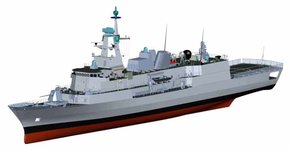Why tactical length VLS? That would limit you to ESSM, SM2 and ASROC only. No possible future VL ASM like NSM or LRASM. Since the IH was designed to take 32 strike length cells, you may as well go the whole hog, IMO.Not T-26s but 3 x OMT Iver Huitfelds, built in South Korea, fitted with 1 x MT-30 GT, 2 x MTU diesels, 2 x Oerlikon Millennium 35 mm guns, 1 x Mk-45 Mod 2 Gun, 32 x Mk-41 tactical length VLS, Sea Ceptor, along with the same sensors, decoys, comms, ISR , data, computing, LM CMS etc., that are being installed on the ANZAC FFH in Canada. The first one after Aotearoa and then the second to be IOC by 2027 followed by the 3rd 3 years later.
Also the upgraded ANZAC sensors don't have the ability to guide ESSM or SM-2. You'd need to add at least one CWI FC radar like the CEROS 200 CW (which is currently being removed from the ANZACS as part of the upgrade). To really take advantage of US weapons you'd need a sensor setup like ceafar2, spy1 or smartL/apar. But the whole reason NZ selected Sea Ceptor over ESSM is so our frigares don't need to be equipped with big, heavy, expensive and high maintenance sensor systems. So the reality is I don't see us going back to the mk41 anytime soon. Which sucks.


